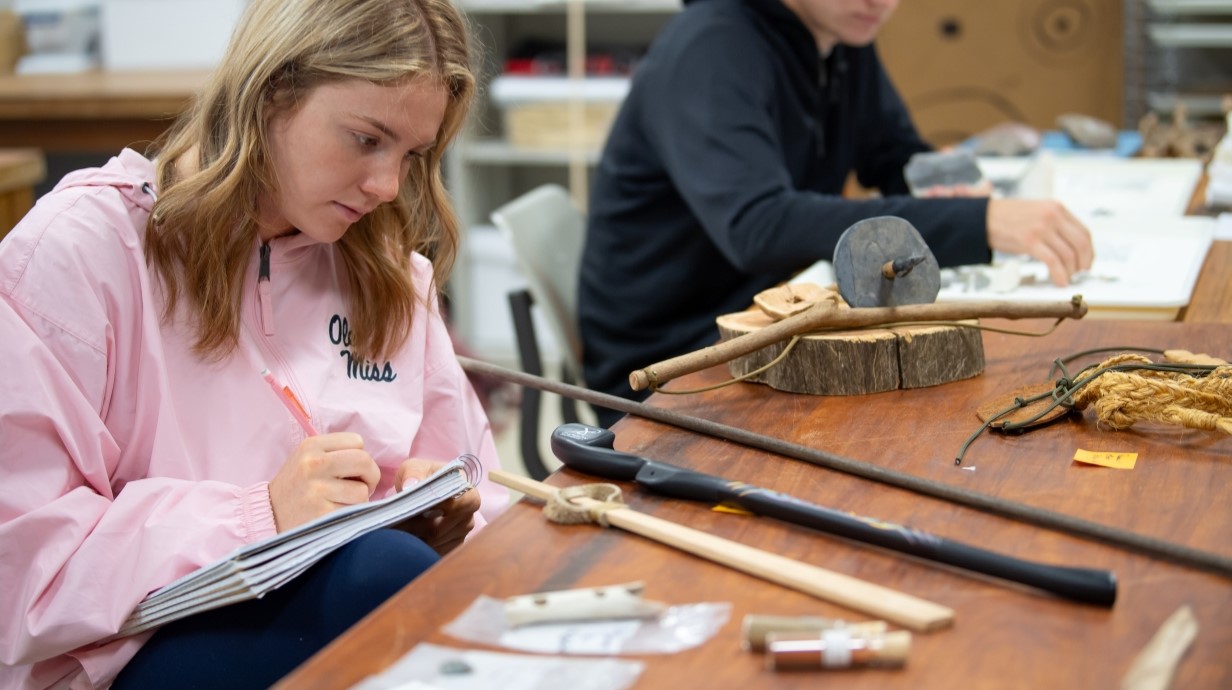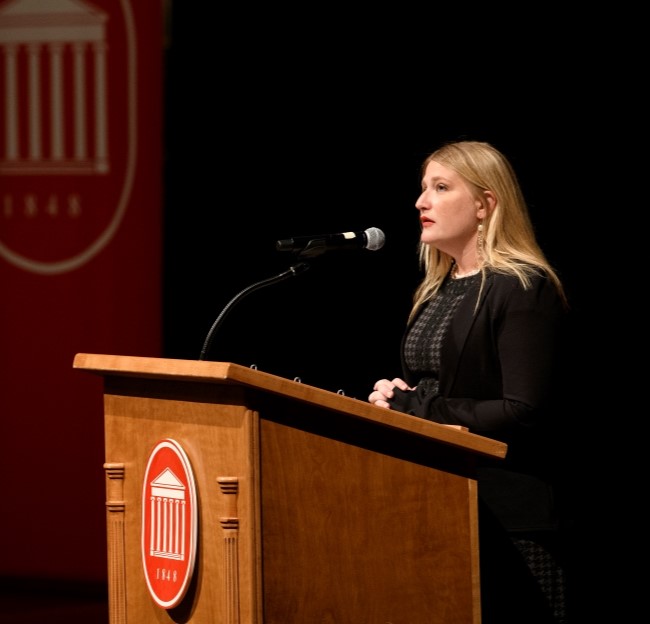Undergraduate Anthropology Courses

Anthropology Undergraduate Courses
The department offers undergraduate courses in the four subfields - cultural anthropology, linguistics anthropology, archaeology, and bioarchaeology - as well as courses in research methods/data science.
- 100- and 200-level introductory courses
- 300- and 400-level advanced undergraduate courses
- 500-level seminar-style courses that combine graduate students and undergraduate students, although there are separate expectations.
Below are a few examples of advanced undergraduate courses. See all anthropology courses in the catalog.
Featured Courses

ANTH 349: Medical Anthropology
Students learn how health and healing practices are understood in diverse sociocultural contexts, as well as being shaped by global processes and power structures. From a biocultural approach, students will gain a much broader understanding of what is meant by illness, healing, and well-being.

Dr. Kate Centellas, Cultural Anthropologist
“How do people define and understand illness? Causes of disease? Different treatments and evidence? Students develop and apply anthropological concepts to understand health, illness, and medical healing practices in diverse sociocultural contexts. Some of the topics include: ideas of the body; personhood; reproduction; illness; disability; mental health; pharmaceuticals and addiction; cosmetic surgery; and distrust of public health measures like vaccines. This exploration prepares students for the complexity of health care practice and policy, helping them understand the many factors contributing to health and well-being.”

ANTH 350: Ice Age North America
Students learn about the archaeological, environmental, and geological record of North America during the last Ice Age, a time when mammoths, mastodons, and dire wolves inhabited the region. The course explores the timing of human entry into the Americas and the extinction of different species of megafauna.
Dr. Jesse Tune, Archaeologist
“Studying the relationships between humans and the environments of North America during the last Ice Age provides a context to understanding all human history in the Western Hemisphere. The interdisciplinary methods and critical thinking skills that students use in this course help to prepare them for future graduate courses, as well as provide a foundation of knowledge for students pursuing a career in cultural resource management.”
Jesse Tune
Associate Professor of Anthropology and Director, Center for Archaeological Research

Anth 419: Dental Anthropology
Students explore the types of information collected from anatomical and archaeological human teeth. Students will learn dental medical terminology, dental anatomy, growth and development, diet and pathology, dental modification, and morphological variation. The course introduces students to basic data collection and analysis used in public health, medical/dentistry, bioarchaeological, and forensic contexts.

Dr. Christine Lee, Bioarchaeologist
“Students learn about dental anatomy and tooth identification, as well as the causes and treatments of common dental pathologies. Students also learn how biology/genetics and culture shape how teeth are treated, maintained, and sometimes altered for beauty. Students have the opportunity to analyze a set of medical teeth to determine population and individual ethnic ancestry, learning how to look at teeth through an anthropological lens focusing on human variation. This type of thinking will benefit anthropology, premed, predental, and health profession majors in their postgraduate studies by giving them a holistic view in which teeth are not just body parts, but also components of an individual’s identity."

Anth 353: Linguistic Anthropology
Students learn about the interrelations between language, thought, and culture, as well as the role of language in cognition.
Dr. Kristin Hickman
"Students will learn about the diversity of languages that exist in the world and how they are linked to the cultural contexts in which they are used. Students will get hands-on experience conducting their own research projects about cross-cultural language practices in Oxford. This course is geared toward possible careers in education, translation, media and communication, diplomacy, and law."
Kristin Hickman
Croft Associate Professor of Anthropology and International Studies and Anthropology Graduate Program Coordinator
